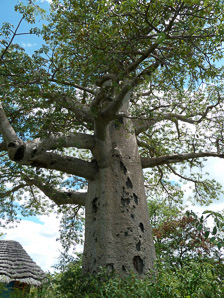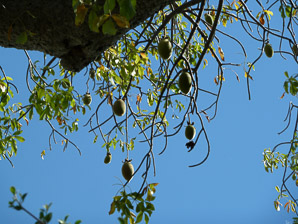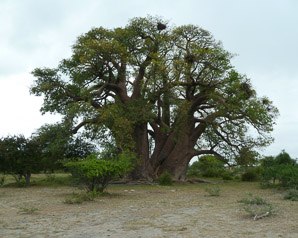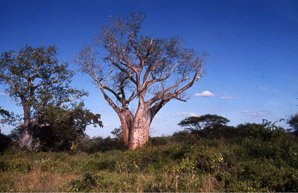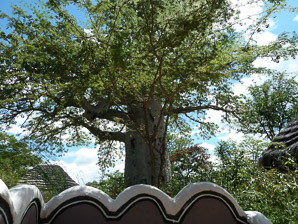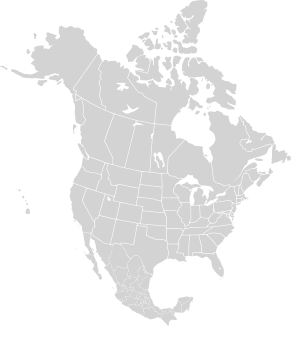
|
Adansonia digitata L. Baobab, dead-rat tree, monkey-bread tree, upside-down tree
Baobabs are widespread in the non-desert regions of Africa, where their large size and distinctive shape makes them iconic against the grasslands in which they most commonly grow. Baobabs are also found in parts of Oman, Yemen, Asia, and India. They are not found in the wild in North America. Identification: Baobabs are up to 82′ (25 m) in height. They develop elephantine trunks that can reach an amazing 92′ (28 m) in diameter. They are uneven, sometimes suggestive of rippling muscles, and tapering. The common name "upside-down tree" refers to the branches' resemblance to roots, and a folk tale that God planted them upside-down. Bark is extremely thick, 1¾-4″ (5-10 cm), gray-brown, usually smooth, though increasingly uneven with age. Flowers are large, white, up to 8″ (20 cm) around, and pendulous. They smell like carrion, which attracts their chief pollinators, fruit bats. (If you're wondering why fruit bats would be attracted to the smell of carrion, well ... so am I.) Fruits are egg-shaped capsules 4½″ (12 cm) long, with woody outer shells. Online References:
The South African National Biodiversity Institute's web site, plantzafrica.com The Food and Agriculture Organization of the United Nations 3/13/2011 · Ntwetwe Pans, Gweta, Botswana · By Benjamin Winslow
Adansonia digitata description by Thomas H. Kent, last updated 25 May 2020. © FloraFinder.org. All rights reserved. |
3/13/2011 · Ntwetwe Pans, Gweta, Botswana · By Benjamin Winslow This is “Chapman’s Baobab”—a famous specimen believed to be 4200 years old. · 3/14/2011 · Ntwetwe Pans, Gweta, Botswana · By Benjamin Winslow 2/15/1989 · Buffalo Springs, Kenya · By Constance B. Kent 3/13/2011 · Ntwetwe Pans, Gweta, Botswana · By Benjamin Winslow Range: Zones 10b-11:
|
